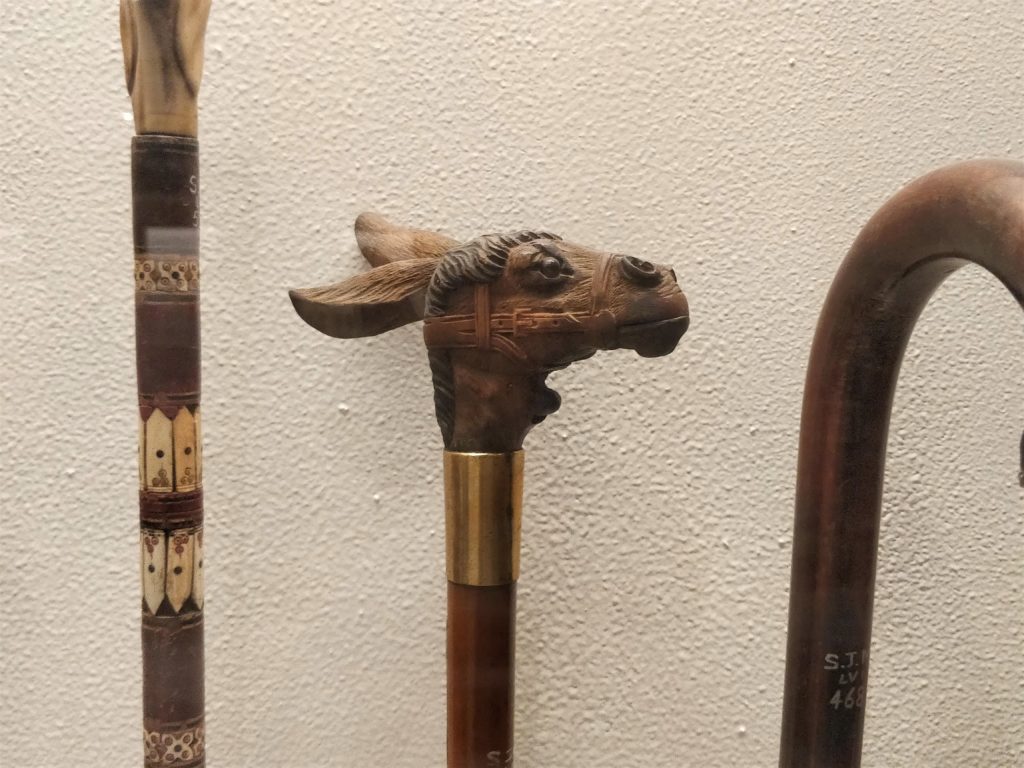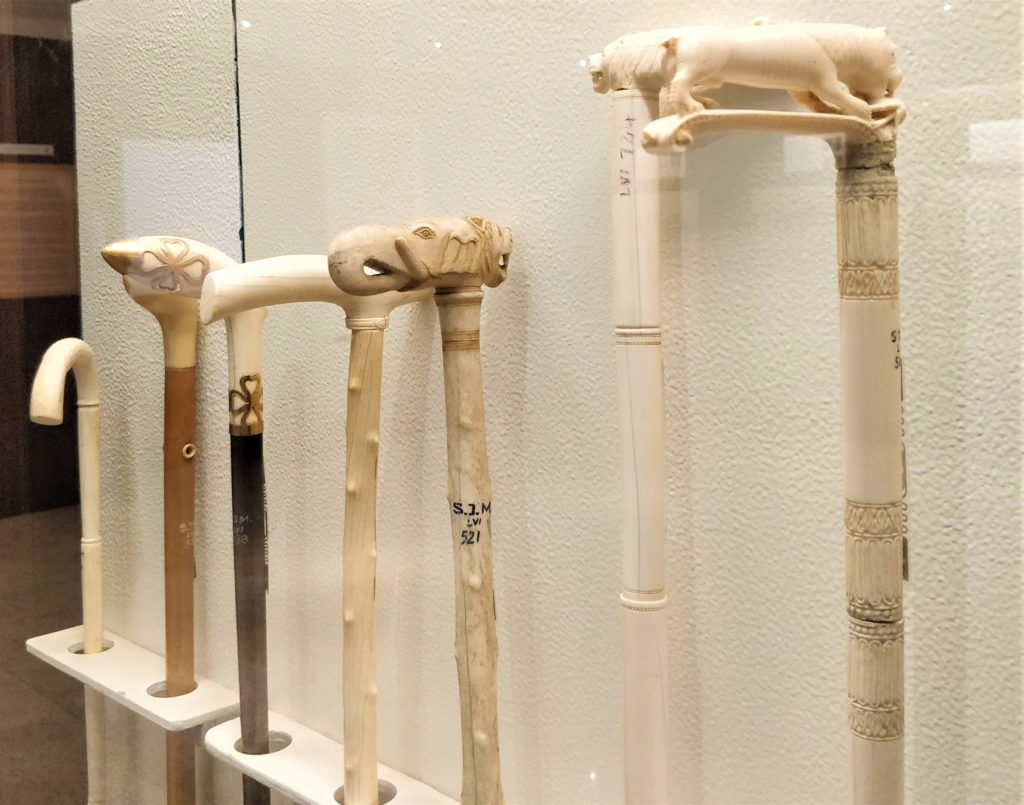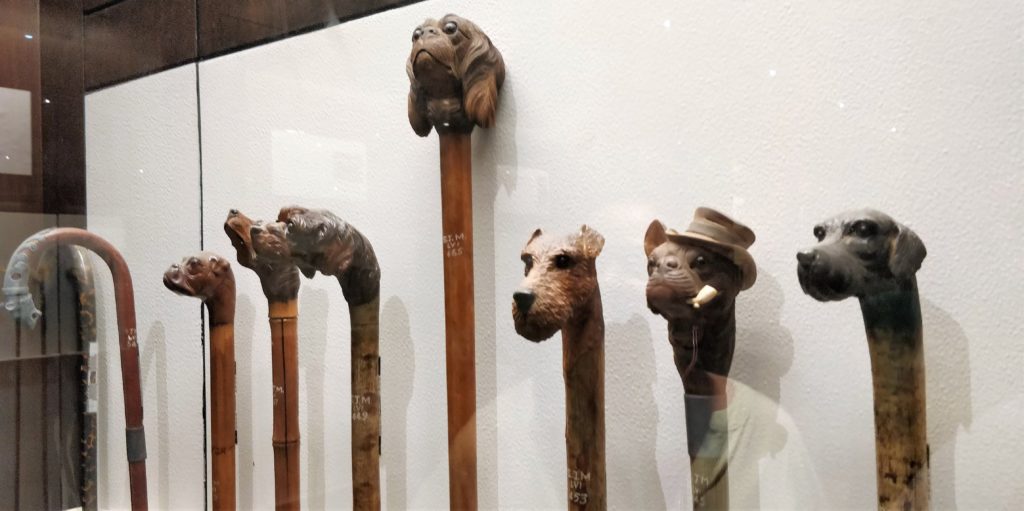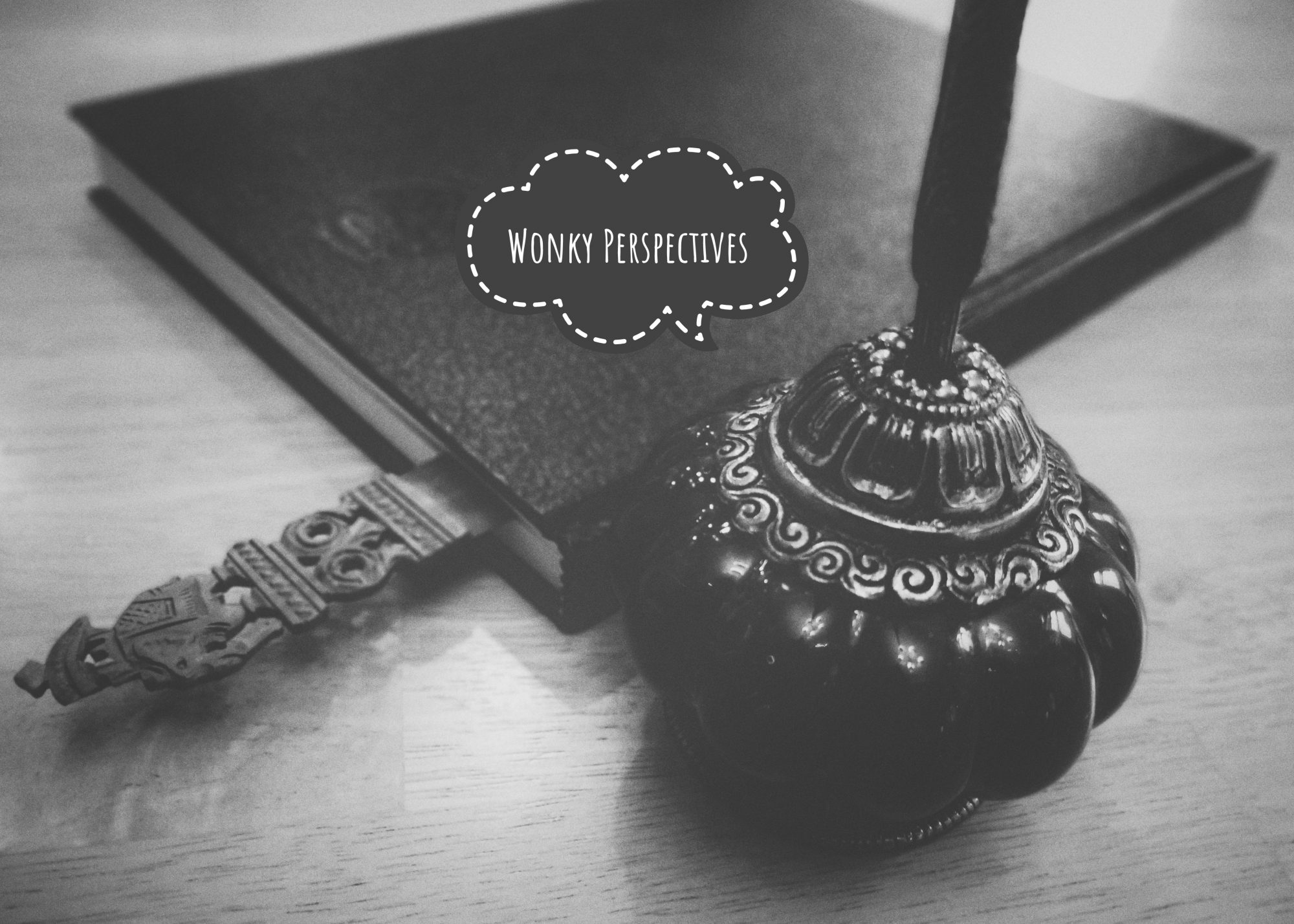One of the characters in my romance book is Aunt E. She is a wonderful, sweet lady, who only wants the best for her nephews and niece. She is so proud of her brother’s children – her nephews and niece, and has done everything to support them. After her brother’s death, she has done her best in filling the gaping hole that the mother created in all of their lives.
Aunt E. was gifted by her nephew Q., an incredibly beautiful elephants head walking cane. This turns out to be one of her favorite gifts ever received, and she walks around with it, to this day. The wooden cane is so detailed, that you can even feel the folds of the eyelids that cover the soft warm eyes of the majestic animal. Aunt E. cherishes the elephants head walking cane. And in the past century, it has brought her a lot of stability.
Animals and their heads were popular choices for walking canes. Check this photo I took at Salar Jung Museum in Hyderabad, India. You could personalize them to add a small thin sword as an insert to the cane. Some of the heads could actually move! A popular trick to bring laughter and smiles to the eternally grumpy and stuffy elite. Check out this donkey head below, it’s ears can move if you click a particular button on the cane. Cool huh? If you ever get a chance, visit the museum. It is one of the most well-preserved private collections of a family, that India and I dare say, the world has.

Personally, I have always loved such walking sticks with animal heads (wooden). Its almost like having the actual animal next to you. I imagine Aunt E. with an elephant next to her, when she walks and talks. The cane brings gravitas and sheer power through its presence. As Aunt E. holds the cane, she quietly touches the left tusk of the elephant and then the broken right, before she is about to bring bad news. The broken tusk reminds her of the sadness that one’s possessions may bring others. For humans the tusk is a symbol of power, but for the elephant – a necessity. She is also woefully aware of how much words and actions can hurt others and always attempts to do the right thing.

Aunt E. is so fond of it, that she’s named it Ellie but will never let it slip out in front of others. In her private bedroom, Aunt E. feels comfortable, and frequently converses with sweet and patient Ellie, who unlike her nephews and niece, listens to her with the utmost attention. The only competition to the quiet elephant, is her cat. But… that’s for another day 🙂

I do want to mention the following:
I do not condone the use of ivory for anything. Tusks belongs to the animal, not humans. The canes were collected by the Nizams (kings) over the past few centuries.
This was part of the research I completed for adding the elephants head cane and its importance for Aunt E. in the book.


